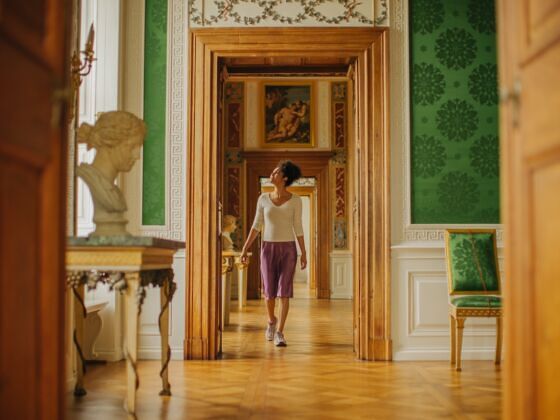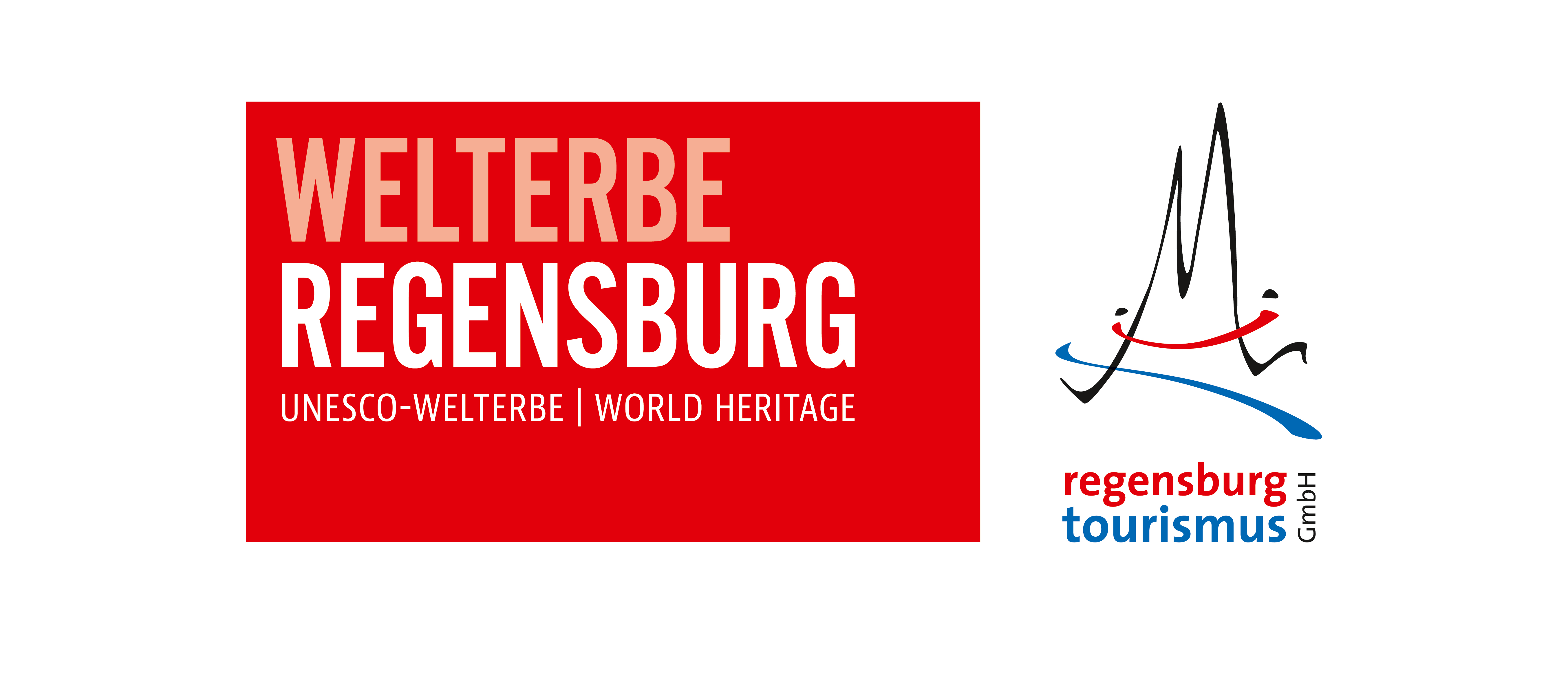Flair has different meanings for different people, but for most it conjures a sense of style and discernment. When it comes to Germany, flair can be found in many forms all over the country. Its cities and towns offer majestic castles and palaces, landscaped gardens, and opulent theaters and opera houses; filling the spaces between are spectacular scenery and unforgettable nature experiences.
In short, whether it’s culture, history, art, or the great outdoors, you can find flair everywhere in Germany if you know where to look.
1. In the elegance of Baden-Baden
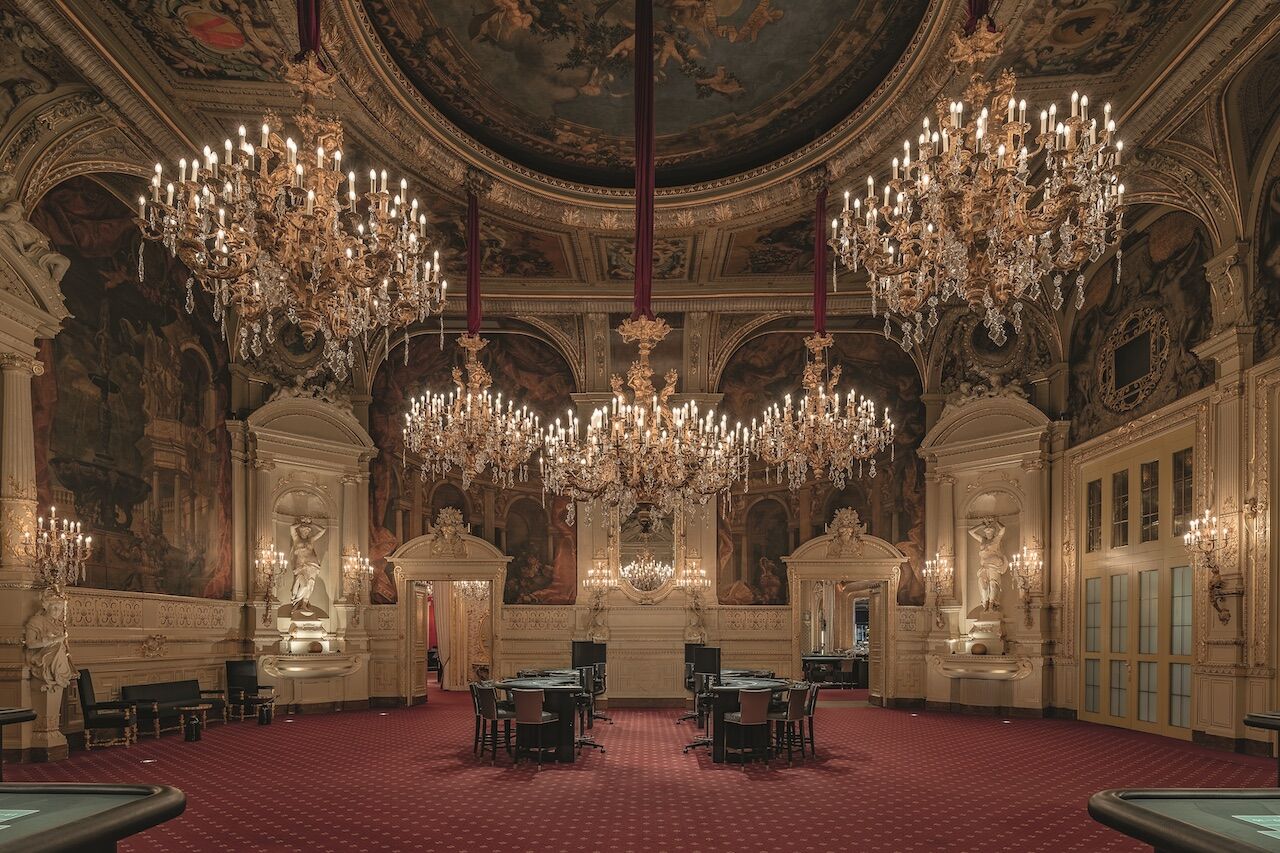
The elegant Casino Baden-Baden. Photo: Torben Beeg
The city of Baden-Baden is well known for its upscale aesthetic, vibrant culinary scene, and excellent access to the wonderful natural site that is the Black Forest National Park. One of the most iconic spots in the city is the Kurhaus, location of “the most beautiful casino in the world,” according to Marlene Dietrich. But the casino is just one part of the Kurhaus. Dating back to 1766, when it was built for the local margrave (noble rank), it reached its heyday during the belle epoque, when the city served as a playground for aristocrats and the wealthy.
Today, visitors can find classical concerts by the venue’s philharmonic orchestra, literary events, and fashion shows, as well as top-notch cuisine at the restaurant The Grill and the revamped HECTORS. You can even indulge in delicious ice cream at Kurhaus Eismanufaktur. Browse the luxury boutiques in the 19th-century colonnade, stroll around the pretty park, or sip refined cocktails at the Bernstein Club or EQUIPAGE Music and Dance Bar; you certainly won’t get bored.
2. In the indulgence of Wiesbaden
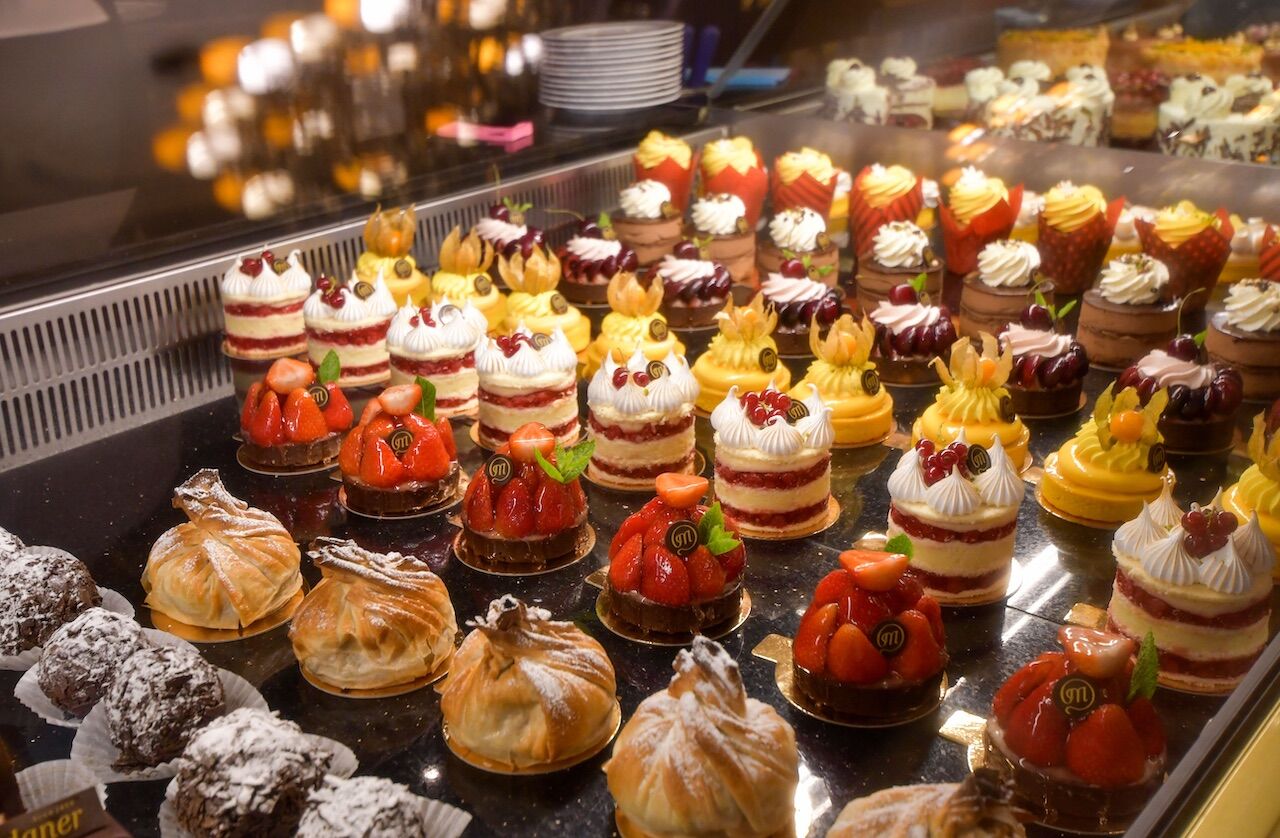
Café Maldaner Wiesbaden. Photo: Claudia Meyer/WICM
Located in the western German state of Hesse, Wiesbaden is an experienced all-rounder when it comes to indulging the senses. A major draw for visitors is the city’s neoclassical Kurhaus, which houses a gorgeously historic casino and English-style landscaped garden designed in 1852. The towering red-brick neo-Gothic Market Church on Schlossplatz and adjacent neoclassical City Palace are memorably photogenic, while art lovers won’t want to miss the Museum Wiesbaden, which elegantly combines both art and natural history.
The city even offers something for sweet-toothed history lovers: Café Maldaner, operating since 1859, has a divine apple strudel. Confiserie Kunder, founded in 1898, produces notoriously delicious pineapple tartlets that still honor an original family recipe.
Explore More
3. In the grandeur of Bayreuth
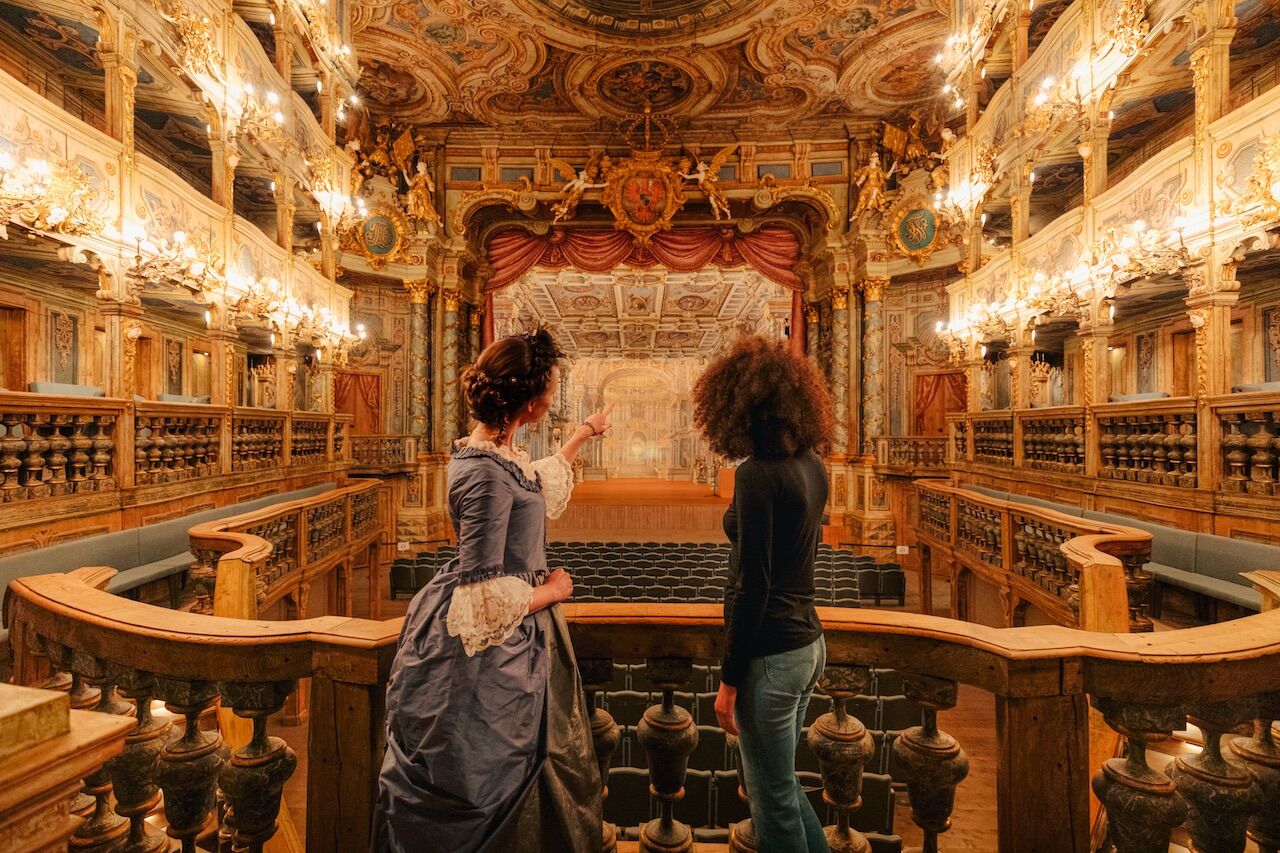
UNESCO World Heritage Margravial Opera House Bayreuth. Photo: Julia Nimke/DZT
It was Margravine Wilhelmine — favorite sister of Prussian King Frederick the Great — who transformed Bayreuth into a center of art and culture in the 18th century. A prodigious artistic talent in her own right (she painted, composed, wrote plays, acted, and directed), the Margravine also opened the famed Bayreuth Opera House, today a UNESCO World Heritage Site.
Modeled on the greatest opera houses of the time in Vienna and Dresden, it was designed by the most important theater architect of the period, Giuseppe Galli Bibiena, and built between 1745 and 1750. The lavish interior, which underwent restoration work from 2013 to 2018, offers an extensive program of events, and visitors can take insightful guided tours organized by the venue and the local tourism board.
4. In the masterpieces of Berlin

Artpark Tegel. When the neighborhood becomes a work of art. Photo: Josefine Köhn-Haskins
Berlin, something of a hub for street art, has outdone itself with the Artpark Tegel project. Initiated by the “Stiftung Berliner Leben” in conjunction with the city’s URBAN NATION Museum for Contemporary Art, the project began in 2015 with the idea of painting a large mural on the side of a tenement as a way of creating a sense of community within the neighborhood.
The initial artwork was so well received that the concept has since been expanded throughout the district, leading to a unique public art project. Up to 137 feet tall, the murals that now dot several high-rises usually have community or societal themes and are created by a mix of Berlin-based artists (e.g., Jim Avignon, acclaimed duo Herakut), as well as international luminaries like London Police, Fintan Magee (the so-called “Australian Banksy”), and Italian artist Pixel Pancho.
5. In the allure of Dresden
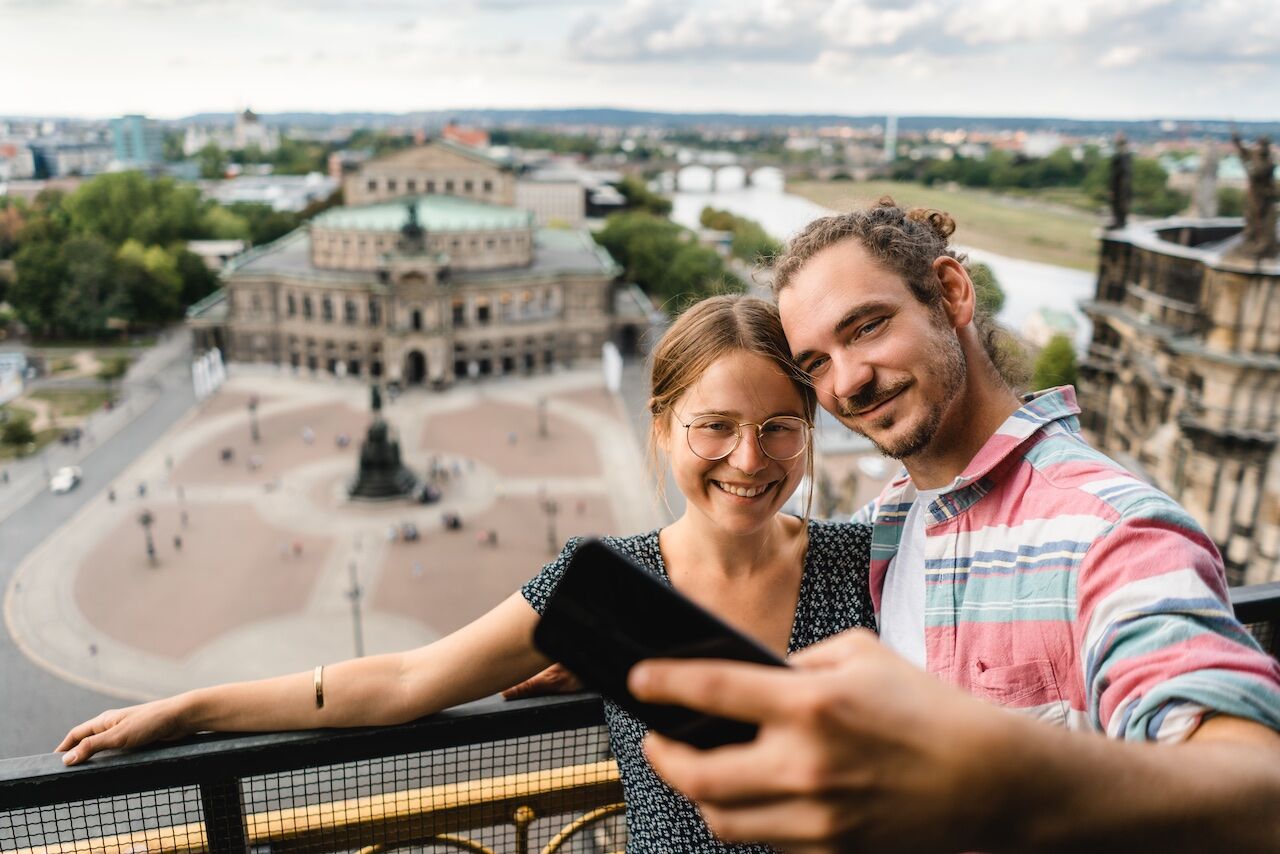
View from Dresden’s Palace tower to the Semper Opera House. Photo: Erik Gross (DML-BY)/Dresden Marketing Board
With 50 museums, 60 art galleries, and almost 40 theaters and stages, Dresden surely spoils art lovers and culture vultures. Among its many esteemed establishments, highlights include the Old Masters Picture Gallery, which houses world-famous paintings like Raphael’s “Sistine Madonna”; the Green Vault, which contains the largest treasure collection in Europe; and the Albertinum, which showcases everything from Romantic masterpieces by Caspar David Friedrich to contemporary works by artists such as Gerhard Richter.
Dresden is a city of music, too, with traditions stretching back over 700 years — Bach, Mozart, Beethoven, Weber, Schumann, and Rachmaninoff all worked here. Its acclaimed venues include the 19th-century Semper Opera House, one of the most beautiful of its kind in the world, and still renowned for its acoustics and performances.
6. In the magnificence of Regensburg
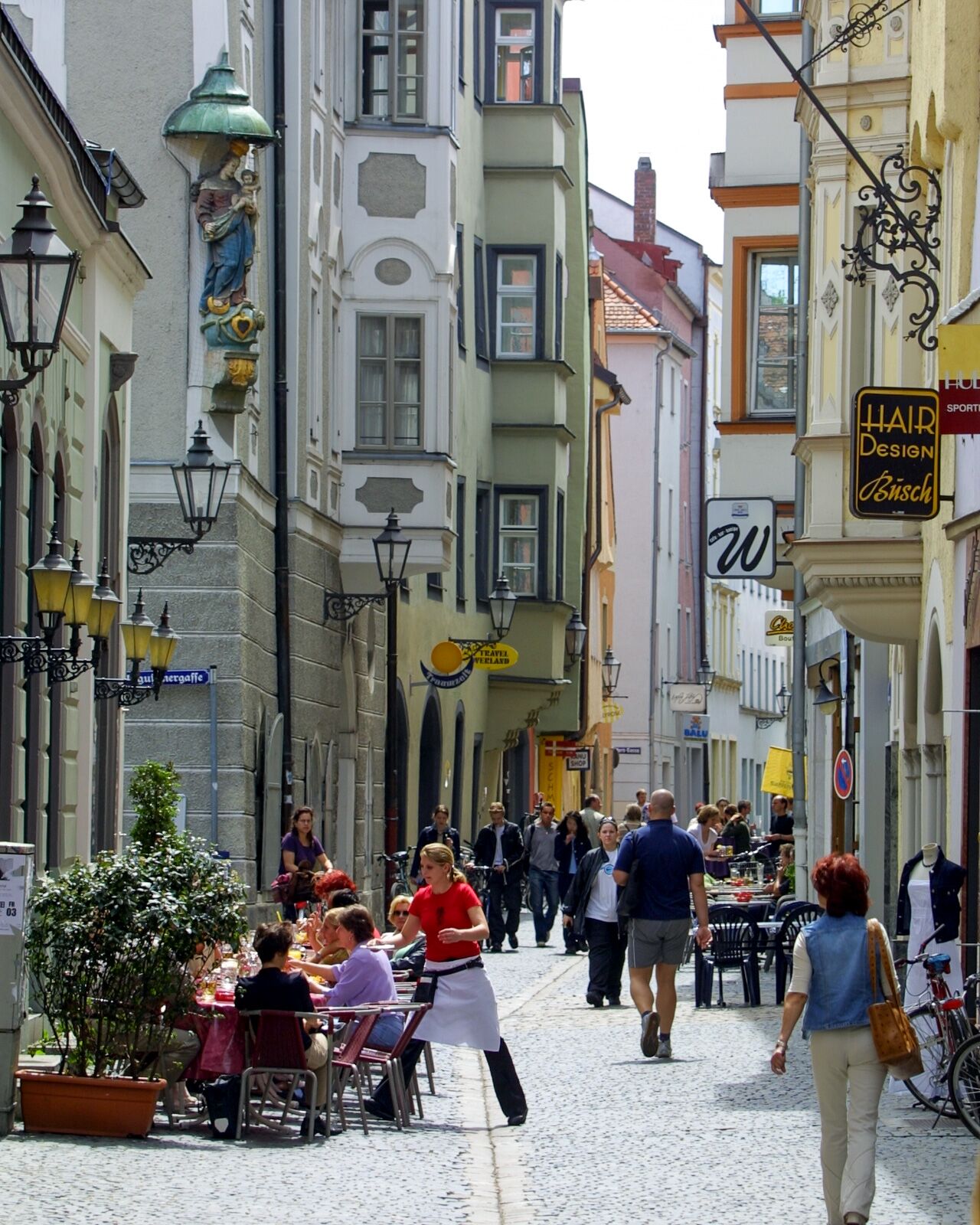
Regensburg UNESCO World Heritage Site on the Danube.
Photo: Regensburg Tourismus GmbH
It’s not an easy task to single out a main attraction in Regensburg, a city with almost 2,000 years of history and a wealth of art and culture, vibrant Bavarian-Italian ambiance, and a generous spread of magnificent architecture. An aimless stroll through the UNESCO World Heritage-listed Old Town is perhaps the best way to discover some of its highlights. You won’t be able to miss St. Peter’s Cathedral, the only Gothic Cathedral in Bavaria and a major city landmark, nor the 150-foot-tall Golden Tower, which hails from the 13th century.
You’ll almost certainly end up at the historic Stone Bridge, too, and the spectacular Thurn and Taxis Palace, which is still inhabited by its aristocratic family. Visit in winter and you’ll get to experience the convivial romance and fragrant aromas of the city’s Christmas Market, largely regarded as one of the world’s best. How’s that for flair?

